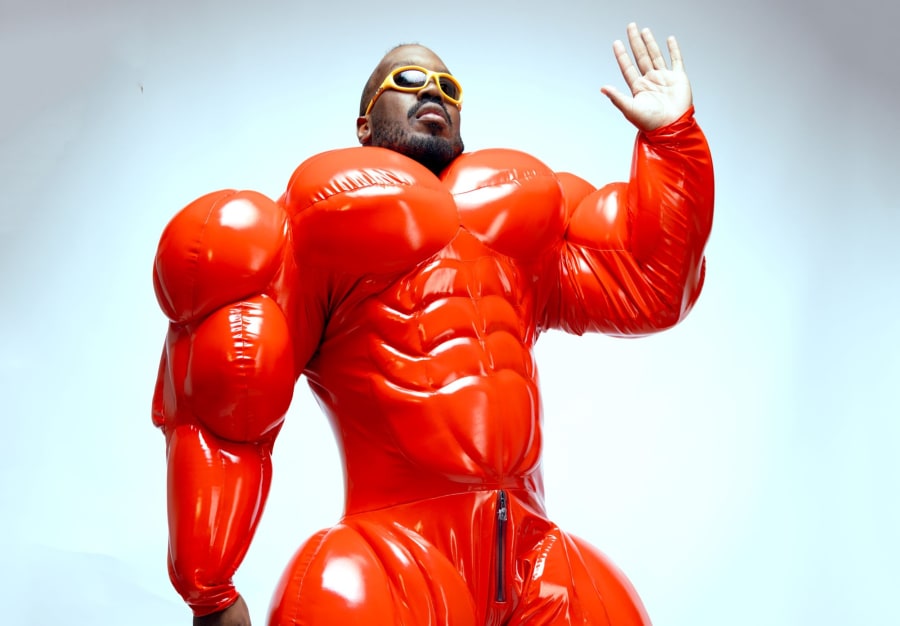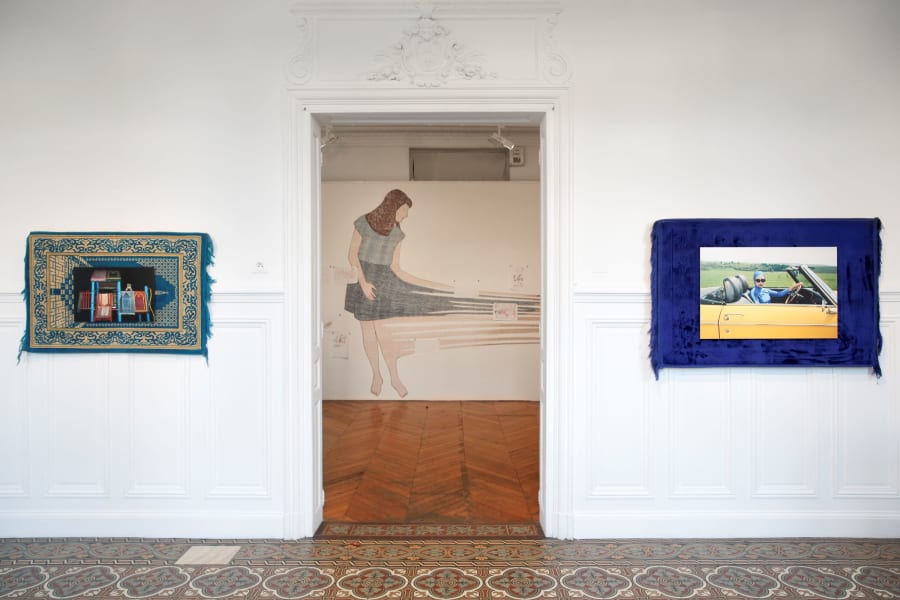「藝術家自營空間有時只是幾位藝術家共用的車庫,」藝術家Nelson Pernisco如是說。他非常瞭解巴黎藝術界;2013年,他與同仁共同創立了藝術家組織Le Wonder,並於次年在聖旺(Saint-Ouen)開設了同名共享創作與展覽空間。在當時的法國,由藝術家自主設立並運營的場地模式還很罕見。「我們是第一批直接和地產商洽談合作的藝術家,」他解釋道。Le Wonder改造了廣闊的後工業場地,同時配備足令藝術院校豔羨的設備,很快便聲名鵲起。幾經搬遷,他們先後從聖旺搬到巴尼奧萊(Bagnolet)、拉德芳斯(La Défense),再到克利希(Clichy),最終於2023年在博比尼(Bobigny)安頓下來。歷經一年建設,如今70位駐留藝術家入駐室內外總面積達16,000平方米的場地,向公眾提供導賞團和名為「opéras」的表演性活動。
DOC也是巴黎首批藝術家共用工作室之一。2015年,12位巴黎塞爾吉國立高等藝術學院(École nationale supérieure d'art de Paris Cergy)的畢業生接管了19區的一所舊中學校舍,翻新約28間教室,用於藝術創作、發行、駐留項目及一個充滿活力的展覽空間。同期,一些規模較小的機構也開始湧現,例如Tonus。2014年,藝術家兼平面設計師二人組Jacent(Jade Fourès-Varnier與Vincent de Hoÿm)開始策劃圍繞宴會或派對主題的展覽。Tonus最初在15區的一個車庫中運營,如今則在18區的Cité Montmartre-aux-artistes繼續策劃活動。
「這些場所大多不定期開放,」Benjamin Thorel指出藝術界對於時間安排上的隨性。作為After 8 Books(一間集出版和活動於一體的藝術書店)的聯合創辦人,在他看來,「經營書店有點像是策展:甄選書籍、引發討論,並通過種種交流互動賦予它們新的生命力。」
After 8 Books的起源可以追溯至獨立空間castillo/corrales內的一個簡易書架,該空間從2007年到2015年便活躍於美麗城(Belleville)街區。在castillo/corrales關閉後,Section 7 Books書店和Paraguay Press出版社由新團隊接手運營,最終成為了After 8 Books,並於2019年遷至現址所在的10區。「我們成為書商,某種程度上是出於偶然,希望在這裡提供我們過去難以尋覓的書籍,這些書籍涵蓋了我們未曾涉足的實踐路徑與行事方式。」Thorel繼續說道。「我們將書店視為一個社交場域,而不僅僅是接收一箱箱書藉的場所。」這一指導理念強調橫向交流,從而構建了一個同儕網路。近期,相關成員也與其他獨立場所合作舉辦了場外活動:與11區的Treize合作舉辦了Chris Kraus的閱讀放映會;與巴尼奧萊的Bagnoler合作舉辦了一場以Piero Heliczer為主題的展覽。書藉也串聯起其他聯繫,例如由Christophe Boutin和Mélanie Scarciglia於2007年創立的Three Star Books――一間位於13區的出版社兼工作室,專注於製作獨特形態的書籍和藝術家限量版作品。
從After 8 Books的街對面穿過一座後院,便可抵達其鄰居Goswell Road空間。對於英法藝術家二人組Coralie Ruiz和Anthony Stephinson而言,一切始於2016年,也始於一間小小的藝術家工作室,藝術創作開端向來如此。剛從倫敦來的他們,意圖喚醒他們眼中沉寂的藝術界。Goswell Road應運而生,這是一個位於rue de l'Échiquier後院的展覽與出版空間:「我們試圖轉向文化的邊緣,發掘那些創作具介入性或顛覆性的藝術家,我們認為這些作品值得被重新審視。」每場展覽,Ruiz和Stephinson都會創作一個花束,對此他們解釋道:「我們自己的作品逐漸退居幕後,留下的是花朵:既是一件轉瞬即逝的雕塑,也見證著我們對受邀藝術家的善意。」同年,在20區,由阿根廷藝術家Maria Ibanez Lago和Constanza Piaggio發起的藝術家自營空間Julio開幕,標誌著持續的國際化進程。
自2020年代初以來,獨立藝術空間迎來了第二波浪潮。2021年,Shmorévaz落戶左岸(Left Bank),拓展了藝術家自營空間的地理覆蓋範圍。在7區的一家廢棄鞋店裡,策展人Salomé Burstein通過策展活動、出版、閱讀和對話探索身體與性別主題。同年,在河對岸,以粉藍格子圖案聞名的折扣百貨商店Tati停業。2022年,該場地被移交給國際青年聯盟(Union de la Jeunesse Internationale)文化中心使用。該項目被聯合創辦人Youssouf Fofana稱為「Palais de Tokyo of the diaspora」(「屬於離散族群的東京宮」),旨在延續社會階層的融合,此次則以藝術為核心。中庭設有社區廣播電台、多媒體圖書館和自助餐廳,而樓上,今年稍早的項目策劃包括重建Seydou Keïta和Malick Sidibé於1998年在此搭建的攝影工作室。
「如今,我們致力於實現事物的永續,」Pernisco總結Le Wonder的現狀,「為創作提供設施是一項真正的挑戰,因為我們看到藝術家們的創作語彙在持續演變。」不可否認,巴黎正在經歷一場變革,既受經濟壓力驅動,也得益於國際化和各藝術界的多元化。「有人或許會問,我們為何還在堅持」,將於11月慶祝成立10周年的Goswell Road團隊如是說,「但我們認為,擁有另類項目策劃的空間比以往任何時候都更重要。」
Ingrid Luquet-Gad是一位常駐巴黎的藝評人及博士候選人。她在巴黎第一大學(Université Paris 1 Panthéon-Sorbonne)教授藝術哲學。
頁頂圖片標題:Le Wonder,《Bobigny》,2024,照片由Salim Santa Lucia拍攝
2025年6月30日發佈


